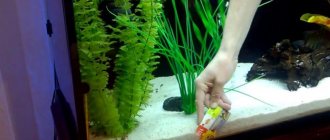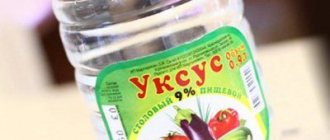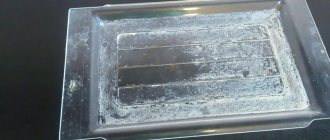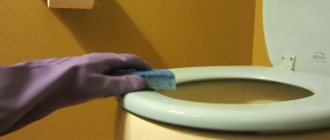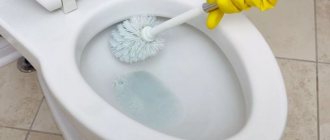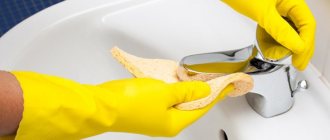Beautifully designed aquariums enliven any interior. Slowly swimming colorful fish in bright greenery calm you down after a busy day and distract you from pressing problems. But, like other living creatures, fish require care, namely, thorough cleaning of their habitat. After all, you must admit that even the most exquisite, rare species of fish will lose their attractiveness in the cloudy walls of the aquarium.
Experienced aquarists know many secrets of caring for their living area, and maintaining cleanliness does not take much effort and time from them. But what if you also decide to join their number, but have absolutely no experience in this? In this article we will show you how to clean an aquarium from limescale at home.
Why do you need to wash and clean your aquarium?
Due to the vital activity of fish and plants, food residues accumulate at the bottom of the aquarium, the water becomes cloudy, green and white deposits appear on the glass, soil, and decorative elements, and the filter becomes clogged. The resulting plaque indicates an imbalance in the ecosystem caused by the appearance of bacteria. This factor directly affects the fish, affecting their health. The aquarium requires weekly cleaning to ensure a comfortable life for the fish. In a clean aquarium, fish are more active, get sick less and live longer.
The main reasons for the appearance
The owner feeds the fish or aquarium plants too generously . An excess of rotting feed residues leads to the active proliferation of microorganisms and protozoan algae, as a result of which a white coating forms on the walls.- Overpopulation of the aquarium . A large number of fish leads to an increase in the volume of waste, and the nitrogen cycle of the aquarium can no longer cope with it.
- Poor quality filter or no filter . Using tap water directly, without first settling or purifying it, also causes lime to appear in the container.
Preparing and cleaning a new aquarium
Before using an aquarium at home, you need to prepare it for fish or turtles. This is required due to the fact that the aquarium is in a warehouse or store, where dust and dirt have accumulated in it.
Preparation
- Leave the new aquarium open for a few hours at room temperature to remove the silicone odor.
- Leave tap water to stand for several days.
Cleaning
- Place the aquarium in a bathtub or basin, laying something down in advance to prevent scratches.
- Rinse the aquarium inside and out with warm, not too hot, water using a sponge.
- If there are smudges or other contaminants, use baking soda as a detergent or wipe the glass with hydrogen peroxide.
- Rinse the aquarium thoroughly (4-5 times) under strong water pressure.
- Rinse with settled water.
- Leave to dry.
Additionally, wash the aquarium components:
- Special substrates should not be washed, but if the soil is quartz, gravel or sand, then it is washed until the water is clear without using cleaning agents.
- Thoroughly rinse all parts of the new filter under running water without detergents.
- Wash decorative items using baking soda.
The next cleaning is carried out no earlier than in a month. During this time, the fish adapt to new living conditions and biological balance will appear. If the aquarium is maintained properly, the water will become transparent with a yellowish tint.
How often should you clean your aquarium?
You can understand that it’s time to wash the aquarium based on the results of a water test for nitrates and ammonia or based on external factors. If the aquarium is dirty, then you will see with your own eyes mud clouds rising from the substrate, growths on the walls, etc.
The frequency of cleaning the aquarium depends on its volume, the number of fish and plants living in it. On average, the cleaning procedure is performed 1–2 times a week.
How often should you siphon the soil in an aquarium?
The causes of soil contamination are fish waste products and food residues from feeding. Clearing the soil is a labor-intensive process, which is not necessary unless necessary.
The right time for the procedure can be determined by the unpleasant smell of rotten eggs that rose with the help of bubbles when turning the pebbles. The smell is caused by hydrogen sulfide gas, which can make fish sick and, in severe cases, die.
Cleaning should be carried out at least 2 times a month.
How often to wash the external filter in an aquarium
The filter purifies the liquid and accumulates beneficial microorganisms in it, which accumulate on external parts. Frequently washing the filters will destroy the beneficial bacteria necessary for an active and healthy life for your fish. Therefore, cleaning the filter should not be done more than once a month. The components can be replaced or rinsed, depending on the design of the model.
We settle in assistants
To clean less often, you can place natural orderlies in the aquarium, who help clean the water and walls of your home pond. This will be done, for example, by ordinary guppies, as well as swordtails, goldfish, platies, ancistrus, and catfish. The structure of their mouth allows them to capture and eat small algae and plaque from the walls.
But not only these fish clean their homes. Snails and shrimp can help them. True, snails are very curious creatures, and if the aquarium is open at the top, they will periodically fall out of it (so it is better to purchase such residents for closed containers).
So, to keep your aquatic pets alert and healthy, it is important to properly care for your aquarium. If you use live assistants, you will have to clean the tank and disturb the aquarium animals less often.
How to clean an aquarium
Special means
These are specially developed cleaning products, after use of which you need to completely wash off the remaining particles so as not to harm the inhabitants.
Examples of cleaning products:
- wipes with impregnation to dissolve lime and green deposits;
- spray for cleaning glass from calcification;
- filter softener that reduces the level of hardness, etc.
To use the above products, it is recommended to completely empty the aquarium and, in the case of the latter, to use it for a short period of time.
Folk remedies
In the event that there are no special cleaning products at hand, an alternative replacement with products available on the farm is possible:
- Baking soda is the most famous cleaning agent.
- Vinegar (9%) copes with white plaque. A tablespoon of vinegar per 200 grams of water.
- Wine vinegar will replace glass cleaner. A spoonful of vinegar dissolves in a glass of water, leaves no streaks and quickly removes plaque.
- Citric acid is effective against calcium deposits. 20 grams of powder are diluted in a glass of water.
- Ammonia is also used for decalcification. Diluted in a ratio of 1:10.
- Hydrogen peroxide is another effective option. The substance is diluted in a ratio of 1:15. Peroxide will help in case of rapid spread of algae, filter malfunction, etc. It allows you to saturate the water with oxygen and oxidize the resulting organic matter. The solution is sprayed in a thin stream into the filter, which will gradually release it into the water. After about an hour, the water is changed to remove dead organic matter.
To use liquid solutions, it is most convenient to use spray bottles.
What products are not recommended for cleaning an aquarium?
It is not recommended to use regular glass cleaners as they contain ammonia, which is toxic to fish, as well as regular cleaning agents. As in the case of special and folk remedies, this is caused by the likelihood that residues of the product will remain on the surface. Only in the case of chemicals does this chance increase many times over, since the stronger the chemical, the more difficult it is to wash it off.
Personal experience
An example of the successful use of improvised substances is the use of 70% acetic acid. In addition, cotton pads and half a razor blade were prepared. To clean glass walls
- the discs were periodically wetted with acid;
- areas of contamination were wiped;
- After wiping, areas with heavy deposits were additionally cleaned with a blade.
The surface is quickly cleaned; in most cases, the blade turned out to be superfluous. After the procedure, the internal cavity must be thoroughly washed. The acid is concentrated, even a minimal amount can harm flora and fauna.
Important! Acetic acid of this concentration gives a strong odor, so it is advisable to clean it in a well-ventilated area.
Cleaning equipment
Glass scraper
Scrapers are needed to remove algae and plaque. The correct selection of tools is made taking into account the characteristics of the aquarium.
The most common is the magnetic scraper. It is the most convenient, allows you to collect plaque by swiping along the glass from the outside, and also does not disturb the fish. A significant disadvantage is its high cost and ineffectiveness in removing limescale.
Plaque can be cleaned with a scraper with a metal blade. When working with such scrapers, you need to be careful not to scratch the aquarium or catch the silicone sealant connecting the walls. Some models of scrapers are presented in a combined form with the ability to replace the blade and sponge with each other.
An alternative to scrubbing is the hard side of a kitchen sponge, not soaked in detergents, or special sponges from the pet store that are sure to eliminate the presence of soap and chemical residues. The soft side of the sponge can be used for general wiping. Hard-to-reach places and decor can be cleaned with a stiff-bristled toothbrush. It is undesirable to use metal tools due to the formation of rust and the danger of it getting into the fish’s esophagus.
Siphon
A soil cleaner or siphon is required to clean the substrate without removing it from the container.
There are different types of siphons. Some drain dirty water directly into the sink, eliminating the need to drain into a bucket, while others have an adapter that allows the water to pass through a filter and back into the reservoir. The principle of the siphon allows you to remove large debris, returning small particles through the filter into the aquarium.
Net
The presence of a net is important when completely changing the water in the aquarium for the safe transfer of fish. The size of the net must be appropriate so as not to damage the fins.
Bucket or bowl
A bucket is needed to collect water and debris. The material must be neutral and not form harmful substances. Inert plastic and enamel are recommended.
Additionally, you can purchase tweezers for planting plants and lifting various parts from the bottom.
We clean it mechanically
To clean limescale and algae, you can use the following available tools:
- Kitchen sponge. This well-known dishwashing accessory effectively removes aquarium stains; all you need to do is walk the hard side on the inside of the glass and then the soft side to secure the result. It is impossible to damage the material from which the “fish house” is made with a sponge: when working manually, a person feels the force of pressure and pressure.
- An old plastic card (for example, a bank or discount card). An unnecessary household item turns out to be indispensable for cleaning up sediment. The thin edge of the card is very convenient for removing stuck dirt. In addition, the plastic acts delicately and does not scratch the glass.
- Toothbrush. The personal hygiene item copes well with dirt, penetrating into the most difficult to reach places. This type of cleaning is especially good for mini-aquariums and small decorative parts.
- Razor blade. It scrapes off heavy deposits well.
All these tools can be used without draining the water. After completing the work, there is no need to catch dirt from the surface. It is enough to drain some of the liquid using a siphon or hose (usually no more than 25% of the water is replaced), the rest will be drawn out by the filter. It will need to be removed, cleaned of mucus and plaque, then put back and added good water to the aquarium.
How to properly clean an aquarium
Proper cleaning is carried out in compliance with a strict sequence, without which you will not be able to achieve the desired effect. For safety reasons, before starting cleaning, turn off the power to all electrical appliances, except external filters. It is recommended to refrain from feeding the fish 2 hours before washing.
Cleaning the walls
If there is lime or green deposits on the walls, cleaning is done with a special scraper or similar glass cleaners. Draining the water and removing the fish is not necessary (unless sharp blades are used for cleaning). The procedure should be carried out carefully to avoid grains of sand getting on the glass, which could scratch it.
For light contamination, it is enough to wipe the aquarium with a sponge. Pressing the sponge tightly against the glass, you need to move it down to the ground, and then also slowly move it up. After rinsing, repeat the operation until the glass is completely clean.
It is not necessary to remove the algae washed from the walls: some will be eaten by fish, the remainder can be removed when changing the water.
The more regularly the procedure is performed, the thinner the plaque and the easier it is to get rid of it.
Aquarium bottom care
The substrate requires cleaning from excrement and food residues. A siphon pump will help in this matter. It's enough to just walk along the bottom. You should work with the siphon carefully so that fish, plants and soil do not disappear along with the dirt. It is better to choose a white basin for draining, so as not to miss a fish that accidentally gets into the hose. You should start cleaning by moving from the most contaminated places to the cleanest ones.
If sand is used as a substrate, it is better to give preference to a pump hose so that the sand is not sucked in (the pump should be kept at a distance of 2.5 cm from the bottom surface).
Soil without a siphon can be washed by stirring in a bucket under strong pressure of running water, having previously moved the fish to a separate container. The soil is washed until the water becomes clear. It is not recommended to wash the soil if the aquarium is densely populated with algae, as this will damage their root system.
Changing the water in the aquarium
To replace, you will need to remove a third of the total volume of stagnant water so as not to harm the established microflora. The volume of replaced water varies depending on the degree of contamination and the conditions of the aquarium (number of fish, plants, filter power and the fish’s desire for cleanliness). Complete removal of water is carried out in extreme cases.
After the old water has been drained, new, settled or chlorine-filtered water with a temperature close to the temperature of the aquarium is added.
Cleaning the filter
Cleaning the filter cannot be combined with washing the decorations and replacing them with water. A sharp jump in water balance can harm the inhabitants of the aquarium. The filter is unplugged, removed from the aquarium and disassembled. Carefully brush the external filter with a toothbrush so as not to wash away beneficial bacteria. When washing the filter, take out the foam insert and wash it under the pressure of running water.
Do not use detergents or wash in hot water. This will kill any flora that has formed in the filter.
Vegetation treatment
Plants and algae are carefully inspected for defects. If yellowed and rotting leaves are found, then pruning is necessary. When weeding root species, you should not raise bottom mud.
Cleaning gravel, stones and decorative elements
Aquarium decorations also need to be cleaned, since plant spores may be located on their surface. Large pebbles, shells, houses and castles should be taken out and washed under running water. Use a sponge to remove dirt and algae. In case of severe stains, soaking the product for 15 minutes in bleach in a ratio of 9:1 will help. After the bleaching procedure, it is necessary to rinse the cleaned decor with boiling water and rinse well with running water. It is advisable to let it dry thoroughly before returning.
Cleaning the outside of the aquarium
The outside of the aquarium is cleaned using a sponge or cloth moistened with water. All external surfaces of the aquarium are wiped, starting with the lamp and ending with the lid. The glass is washed from drops and fingerprints, and then wiped with a dry cloth.
Prevention of plaque formation on the walls and stones of the aquarium
The level of lighting in the aquarium needs to be controlled by lighting.
As preventive measures that will prevent the reappearance of pests, you can apply:
- regular change of water, pre-settled for 5 days;
- control of daylight hours using backlighting, which should operate no more than 10 hours a day;
- filling the aquarium with plants and taking good care of them;
- launching fish that feed on algae;
- control of the amount of food: within 15 minutes the fish should eat all the food received; if it remains and settles on the stones, then the amount should be reduced;
It is worth fighting brown, green and brown plaque on the walls of the aquarium not only to give it an attractive appearance, but also to save the lives of the inhabitants. Algae can upset the balance of nutrients in an artificial ecosystem, and then the fish will feel uncomfortable there.
Aquarium disinfection
Disinfection is carried out in case of infection in the aquarium, when simple washing is not enough. The aquarium is filled to the brim with a disinfectant solution for 2 days, thoroughly washed and left to dry for at least a day. The fish should be placed in separate containers with clean water.
It is recommended to use disinfectants such as potassium permanganate, chloramine solution, formaldehyde, diluted hydrochloric and sulfuric acid.
It is recommended to heat treat (boil) the equipment used. All surfaces are treated with a disinfectant solution, including the filter, decorations, lid, etc.
Preparatory actions.
Preparations should begin the day before the planned cleaning by pouring clean water (not mineral) into a container or bucket in an amount of approximately 20% of the aquarium’s capacity. This is necessary to evaporate chlorine, which is harmful to fish. If it is possible to settle the water in advance or to be more sure that the water is definitely suitable for underwater inhabitants, you can use special preparations for water purification.
Then you need to make sure that you have all the equipment necessary for the cleaning process. When you are going to clean the aquarium, turn off all electrical appliances in the aquarium.
How to restore the biobalance of an aquarium
The method of restoring biobalance depends on the reasons that caused the disturbance.
Causes of biobalance disturbance
- Too many plants.
- Infection.
- Overfeeding.
- Lack or excess of light.
To restore biobalance, the following methods are used:
- Launching cleaner fish.
- Mechanical cleaning.
- Reducing lighting time.
- Complete cleaning of the aquarium.
- Algae control products, etc.
Biological balance is characterized by the transparency of the water, its yellowish color and the natural greenery of the plants.
Prevention, tips and recommendations
Beginners in the business of breeding indoor flora and fauna will benefit from several tips and recommendations for preventing scale:
- Not all filters are capable of preventing calcification; when choosing, you need to pay attention to the features of the reagent, recommendations of sellers and advice from experienced colleagues;
- Most water additives are GH modifiers, which increase the content of minerals and calcium; hardness can be reduced by adding regular distilled water;
- The most effective way to combat lime deposits is regular maintenance; its frequency depends on the volume of the aquarium, the number of its inhabitants, and the capabilities of the equipment, including filters, aeration and lighting systems.
Summarizing what has been said, the most effective methods to prevent the occurrence of plaque are timely care, a balanced ratio of flora and fauna, a adjusted amount of feed, high-quality and efficient equipment.
How to soften the water in an aquarium
Suitable conditions for aquarium plants and fish are a hardness of 4–6 dKH degrees and an acidity of 6.8–7.2 pH. As dKH increases, the basicity of the medium increases (the medium becomes alkaline). This negatively affects the health of living organisms and leads to imbalance. It is also not recommended to reduce the hardness too much, since the water balance is disturbed.
- Boiling is the simplest and most accessible method. Hardness decreases as a result of precipitation of calcium and magnesium salts. The water is boiled, cooled, settled and poured into the aquarium.
- Distillate is a source of soft water. The hardness of this water is 1 dKH, but it is very convenient to dilute hard water. The main thing is to do this carefully so as not to provoke a deficiency of elements.
- Freezing is the incomplete freezing of water followed by thawing. Water hardness after defrosting is 3 dKH.
- Electrolysis is the softening of aquarium water by lowering electrodes. During this procedure, the liquid parameters are brought to 0 dKH.
- Reverse osmosis filters are an expensive method that allows you to obtain water with a parameter of 0–1 dKH.
How to remove sediment from water?
To remove lime deposits, dilute ammonia with water in equal proportions. Soak a clean cloth or paper towel in the liquid and wipe the dirty areas with it. Leave the product for half an hour or an hour, and then rub the plaque with a soft sponge.
Interesting materials:
How to remove stains from plastic window sills? How to remove stains using bleach? How to remove stains from the matting? How to remove stains from tulle? How to remove stains from a bathtub? How to remove stains from a light down jacket? How to remove a stain with ammonia? How to remove blueberry stain from carpet? How to remove a marker stain on a sofa? How to remove a soda stain from a sofa?
How to care for a salt water aquarium
- For a saltwater aquarium, proper preparation of seawater is an important component. Simply standing the water will not be enough. Distilled liquid or double purified water is used.
- Using pumps, flow is simulated.
- A weekly partial water change is required.
- The walls and bottom are cleaned once a week.
- Water quality must be monitored regularly.
Otherwise, the care rules are the same as for a freshwater aquarium.
How to clean an aquarium from white limescale deposits
White limescale is the remains of mineral salts deposited on the surface of the glass as a result of evaporation of the liquid.
Methods for cleaning white deposits in an aquarium:
- Mechanical cleaning. Using a scraper, toothbrush, or the hard side of a sponge.
- Special glass cleaning products (sprays and wipes).
- Folk remedies (citric acid, ammonia, etc.).
Causes of plaque
First, it’s worth getting acquainted with the causes of limescale. As a rule, this is excessively hard water, which contains a lot of magnesium and calcium salts. Factors contributing to the accumulation of water stone are:
- lack of aquarium flora or its absence;
- adding feed too frequently;
- use of water without preliminary settling;
- irregular care;
- lack of a filter or its low quality.
If you take into account all the listed nuances in time, you can avoid the appearance of a large number of deposits.
Important! It is impossible to use water completely devoid of minerals; it disrupts the ecological balance of the aquarium and leads to the death of fish and vegetation.
Cleaner fish, snails and other helpers that clean the aquarium
There are biological organisms that prefer to feed on algae, organic debris, and rotten plant leaves. They help clean the aquarium from the inside.
- Cleaner fish (Siamese algae eaters, otocinclus, ancistrus, etc.).
- Algae-eating snails (Helena, Javanese corbicula, porcelain septaria, etc.).
- Algae-eating shrimp (amano, cherry shrimp, neocardines, etc.).
- Catfish (dwarf and brocade catfish, ancistrus), etc.
